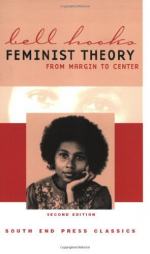
|
| Name: _________________________ | Period: ___________________ |
This quiz consists of 5 multiple choice and 5 short answer questions through Chapters 8 and 9.
Multiple Choice Questions
1. Related to the issue of feminist writing, between which two groups does the author notice tension in the greater feminist movement?
(a) The tension between those who advocate scientific analysis and those advocating political manifestos.
(b) The tension between those who write and discuss theories and ideas and those who engage in direct activism to support the feminist movement.
(c) The tension between younger and older women.
(d) The tension between those who are idealistic and those who are practical.
2. The author states that most women would like to be like ________________.
(a) their mentors.
(b) their best friends.
(c) white men.
(d) their mothers.
3. What was the week point in feminists' initial view of power?
(a) They placed too much value on attaining power and not enough on its effects.
(b) They did not realize that power was not limited to men.
(c) They did not distinguish between power as domination and control over others and power that is creative and life-affirming.
(d) Their opinions were vague and lacked cohesion.
4. The author cites Lillian Hellman's autobiography as an example of what kind of phenomenon?
(a) White women projecting mythical power and strength on black women while presenting themselves as powerless.
(b) An early white feminist who listened to women of color.
(c) White women being afraid to tell their domestic servants what to do.
(d) An rare example of working class writing.
5. Who must be retrained in order for the feminist movement to be successful?
(a) Teachers.
(b) Men.
(c) Men and women.
(d) White upper class men.
Short Answer Questions
1. What assertion does the author make about lower and middle class women and power?
2. In the Preface to the first edition (1984), which two key terms in her analysis does the author introduce?
3. Related to education, what does the author see as one of the primary goals of feminism?
4. The phrase "the problem that has no name" refers to which of the following issues?
5. Why does the author hold her particular beliefs about prioritizing struggles against different forms of prejudice?
|
This section contains 484 words (approx. 2 pages at 300 words per page) |

|




